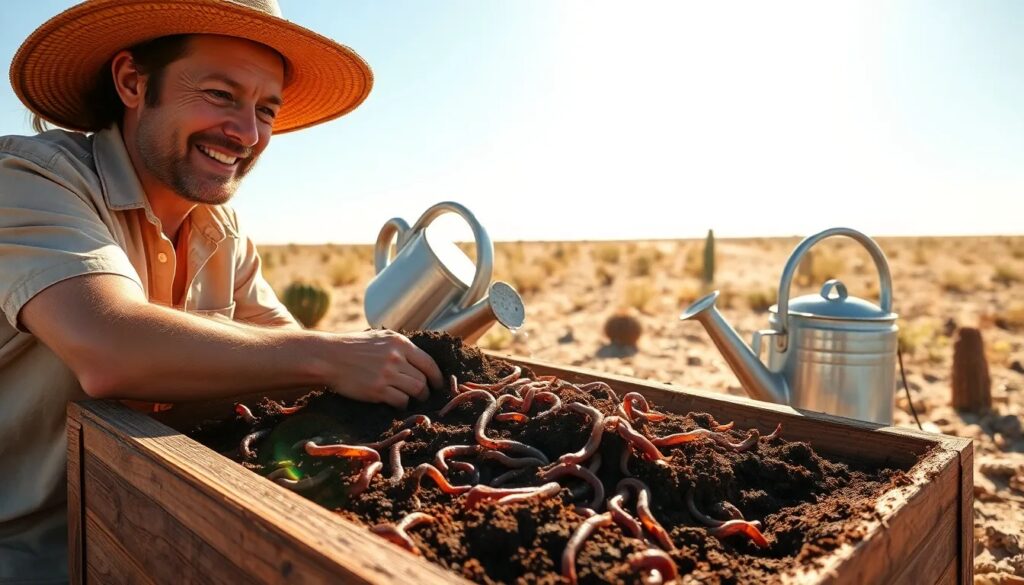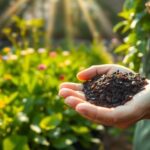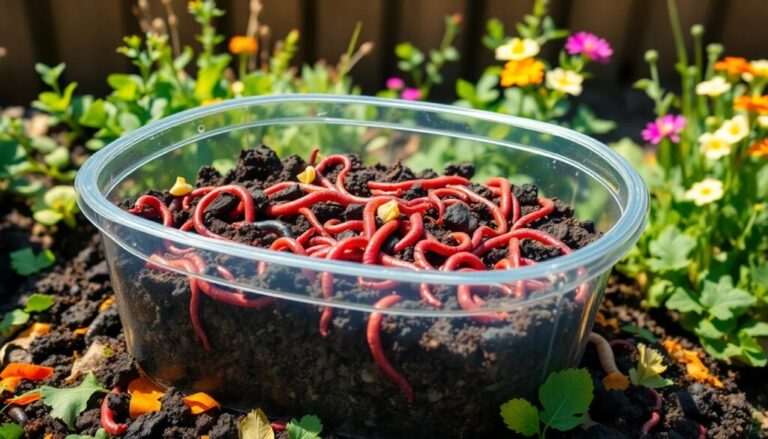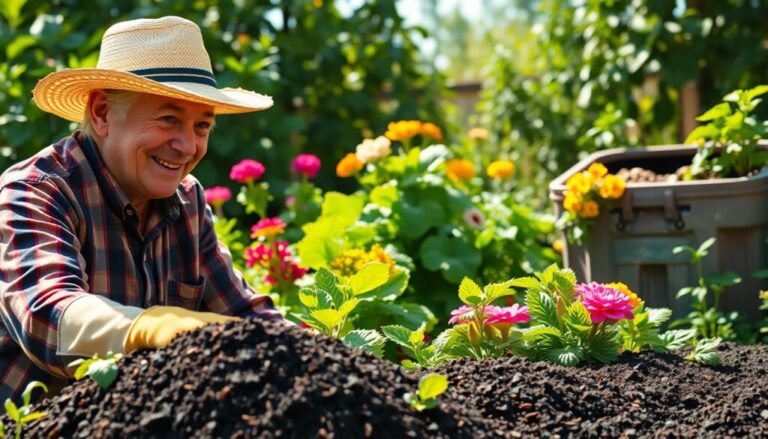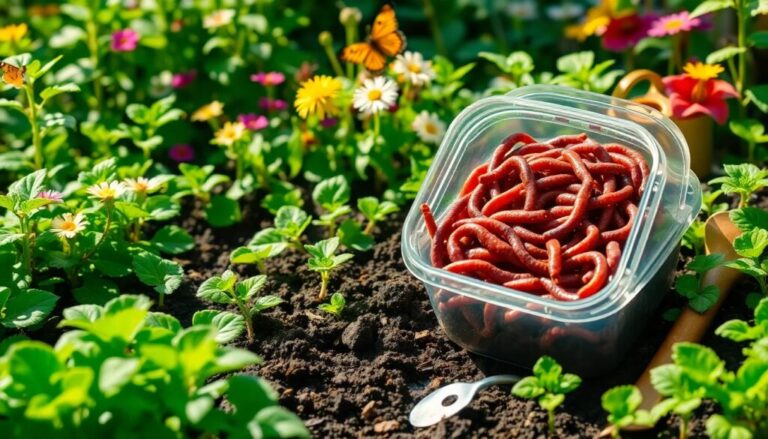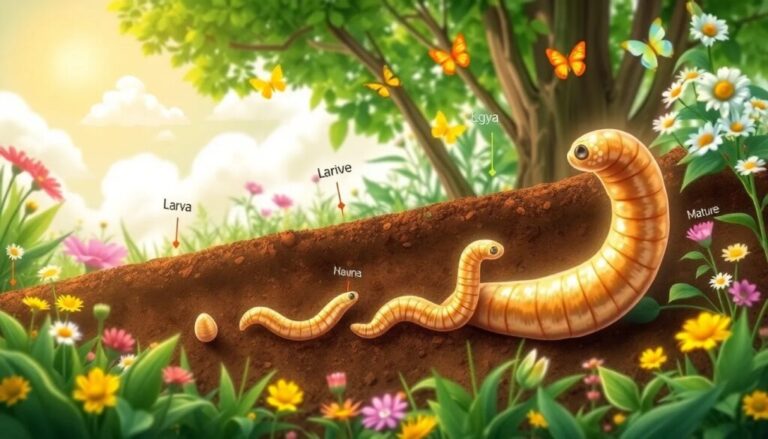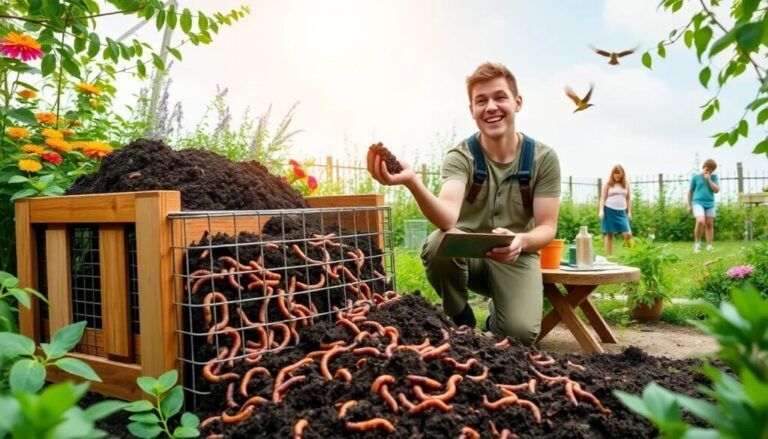Guide to worm farming in hot and dry climates
Worm farming, or vermiculture, is becoming an increasingly popular method for eco-conscious gardeners to recycle organic waste while enhancing soil quality. This guide to worm farming in hot and dry climates will help you navigate the unique challenges presented by these conditions, ensuring your worm farm thrives all year round.
In this comprehensive guide, we’ll explore essential aspects such as the best worm species for hot climates, how to construct effective worm bins, and tips for managing temperatures effectively. Understanding these factors will allow your worm farm to flourish, contributing to a sustainable gardening ecosystem.
What Is Worm Farming and Its Benefits?
Worm farming is the practice of breeding worms to decompose organic waste and produce nutrient-rich compost. This process, known as vermicomposting, offers numerous benefits, particularly in warm climates.
- Soil enrichment: Worm castings are packed with nutrients that enhance soil quality and promote healthy plant growth.
- Organic waste recycling: Worms effectively process kitchen scraps and yard waste, reducing landfill contributions.
- Sustainable composting: Vermicomposting is an eco-friendly method that supports sustainable gardening practices.
- Improved soil structure: Worm castings help improve the aeration and water retention of soil, benefiting plant health.
By engaging in worm farming, you contribute to environmental sustainability while providing your plants with the nutrients they need to thrive.
How Does Temperature Affect Worm Farming?
Temperature is a critical factor in successful worm farming. Extreme heat can stress worms, impacting their health and productivity. Understanding how temperature affects your worm farm is essential for effective management.
Worms thrive best in temperatures between 55°F and 77°F. Outside of this range, their activity can decrease significantly. High temperatures can lead to overheating, causing worms to become inactive or, in extreme cases, die.
Monitoring the temperature is vital, especially in hot climates. If the temperature exceeds 85°F, you may need to implement cooling strategies to protect your worms and maintain a healthy environment.
Regularly checking the temperature of your worm bin allows you to make necessary adjustments and ensure your worms remain healthy and productive.
What Are the Best Worm Species for Hot Climates?
Not all worm species are suitable for warm climates. Choosing the right species is crucial for the success of your worm farm.
- Red wigglers: These worms are prolific composters and thrive in warm conditions, making them an excellent choice for hot climates.
- African Nightcrawlers: Known for their ability to tolerate higher temperatures, African Nightcrawlers can handle extreme heat effectively.
- European Nightcrawlers: They also adapt well to warmer conditions and are effective at breaking down organic matter.
Selecting the right worm species for your climate will help ensure the longevity and productivity of your worm farm.
How to Build a Worm Bin for Extreme Weather?
Constructing a worm bin that can withstand high temperatures is essential for protecting your worms. Here are some key considerations when building your bin:
Your worm bin should provide adequate insulation to shield worms from extreme heat. Consider using insulated materials or double-walled designs to help regulate temperature inside the bin.
Ensure proper ventilation to prevent overheating and to allow for air circulation. Ventilation holes should be placed at the top and sides of the bin to promote airflow.
- Location: Place your worm bin in a shaded area to prevent direct sunlight from raising its internal temperature.
- Size: A larger bin can hold more bedding and organic waste, which can help moderate temperature fluctuations.
- Cover: Use a breathable cover, like burlap, to protect the worms from the sun while allowing moisture to escape.
Taking these steps will help you build a worm bin designed for extreme weather conditions, enhancing your chances of success.
What Should Be Included in Worm Bedding for Hot Climates?
Worm bedding is crucial for the health and well-being of your worms. In hot climates, it is essential to select the right materials for bedding.
Use a mix of carbon-rich brown materials, like dry leaves, shredded cardboard, or newspaper, to create a balanced environment in the bin. These materials help regulate moisture and provide a comfortable habitat for your worms.
Adding moisture to the bedding is critical, especially in dry conditions. Maintain a damp but not soggy consistency to ensure your worms have access to the moisture they need to survive.
- Consider adding:
- Coir (coconut fiber) for moisture retention.
- Composted manure for added nutrients.
- Fruit and vegetable scraps that can decompose and maintain humidity.
The right bedding materials will help create a suitable environment for your worms, fostering their health and productivity.
How to Manage Heat in Your Worm Bin?
Managing heat in your worm bin is crucial, particularly during the summer months. Here are some effective strategies to keep your worms cool:
One method for cooling your worm bin is adding ice packs or frozen water bottles inside the bin during hot spells. This will lower the internal temperature, providing a comfortable environment for your worms.
Another effective strategy is to cover your bin with shade cloth or similar materials. This will reduce direct sunlight exposure while still allowing for airflow.
- Regularly check moisture levels: Dry bedding can increase temperatures, so maintain appropriate moisture levels.
- Use fans: Setting up small fans can help improve ventilation and reduce heat buildup inside the bin.
- Mulch: Placing mulch around the base of your bin can help keep the surrounding area cooler.
Implementing these practices will help you effectively manage heat and keep your worms healthy and productive.
When Is the Right Time to Harvest Worm Castings?
Harvesting worm castings is a rewarding process that ensures your efforts in worm farming pay off. Knowing when to harvest is vital for maximizing the benefits of vermicomposting.
Worm castings are typically ready for harvest every 3 to 6 months, depending on the worm population and the amount of organic waste being processed. Signs of readiness include a dark, crumbly texture and an earthy smell.
To harvest, gently separate the worms from the castings using methods such as:
- Light method: Place the bin in a well-lit area for a few hours, encouraging worms to burrow deeper.
- Screening method: Use a screen to sift out the castings while leaving the worms behind.
By harvesting castings at the right time, you’ll provide your plants with nutrient-rich soil amendments that will enhance their growth and health.
For more visual guidance, check out this informative video:
By following this guide to worm farming in hot and dry climates, you can create a thriving worm farm that contributes to sustainable gardening practices and enhances your garden’s productivity. With the right techniques, you can successfully manage your worms and enjoy the many benefits of vermicomposting.

